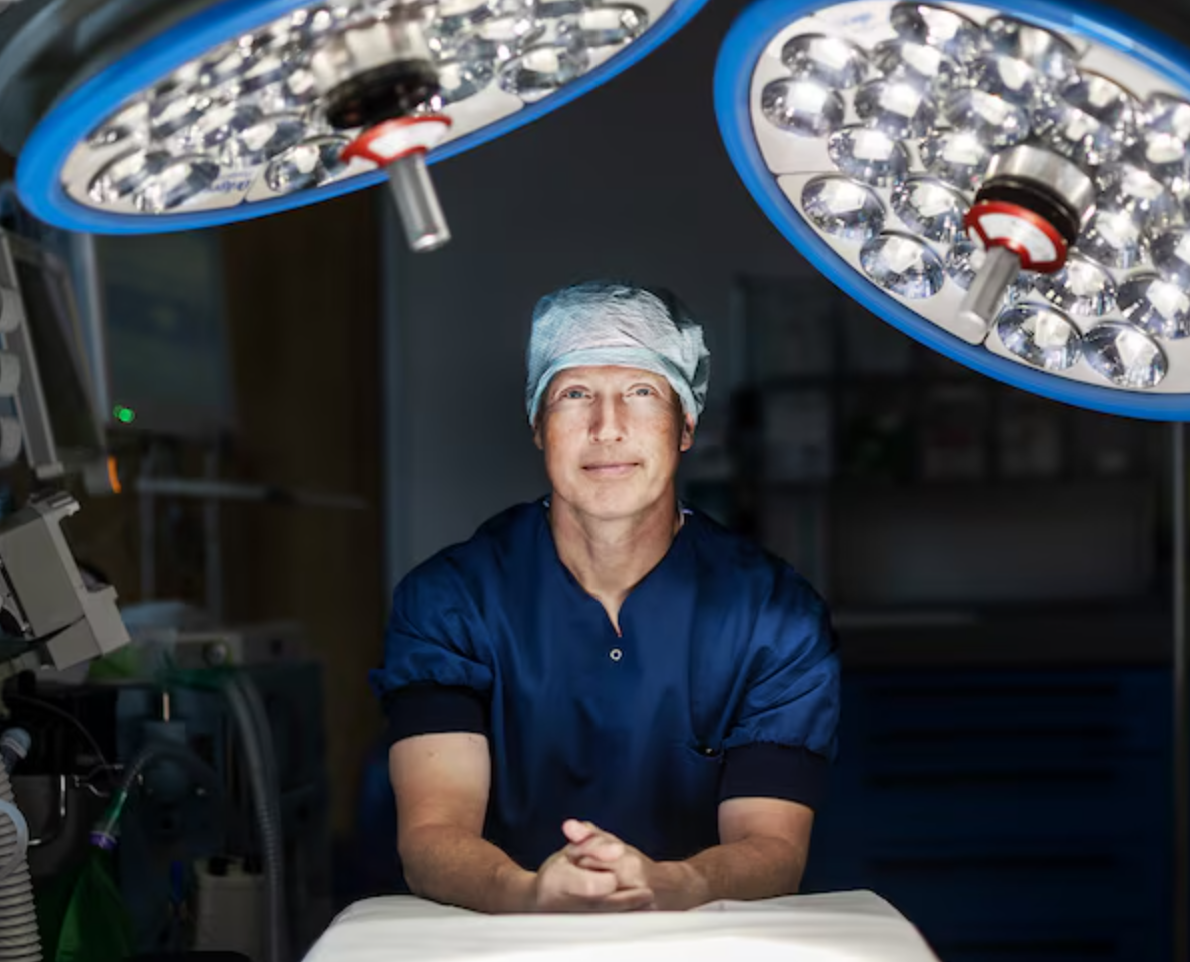Mother-Assisted Caesarean (MAC): When Birth Lies in the Mother’s Hands
A transformative Dutch approach that lets mothers lift their own babies during a C-section — turning a surgical birth into a deeply personal, empowering experience.
.jpg)
For many women, birth is imagined as a vaginal delivery with skin-to-skin contact and an immediate connection with their baby. Sometimes, though, birth takes another path — a caesarean section. While life-saving and safe, it can feel very medical and clinical.
Since 2017, there’s been a new alternative: the Mother-Assisted Caesarean (MAC), developed in the Netherlands by dr. Koen Deurloo (Diakonessenhuis Utrecht). This approach makes a surgical birth more personal — literally placing the moment of birth back into the mother’s hands.
.jpg)
What is a Mother-Assisted C-section?
In a MAC, the sterile drape is lowered, and the mother’s hands are guided to the incision. The baby is born into her hands, then with help from the gynecologist, lifted out of the womb and placed directly skin-to-skin on her chest.
It’s a small technical adjustment, but one with a big emotional impact. Instead of being a passive patient, the mother becomes an active participant in her child’s birth.
How is MAC different from a “gentle” caesarean?
- Gentle section: clear drape, calmer environment, early skin-to-skin, music, delayed cord clamping.
- MAC: all of the above, plus the unique moment that the mother herself takes her child in her hands.
The distinction matters: MAC is not just a softer atmosphere, but a fundamentally different experience of agency and connection.
.jpg)
What does research show?
Between 2017 and 2025, we compared nearly 200 MAC births with 200 gentle caesareans in Utrecht. The findings are clear:
- Safety: Surgical outcomes and neonatal health were equivalent. Blood loss, complication rates, and Apgar scores were the same.
- Surgical time: MAC took on average four minutes longer; a difference without clinical consequence.
- Bonding & breastfeeding: Mothers in the MAC group more often breastfed within the first hour (88.9% vs. 78.7%) and used more positive words to describe bonding.
- Satisfaction: Women rated their overall experience higher (median 9 vs. 8). Especially those with previous birth trauma or mental vulnerability reported that MAC helped them regain a sense of control.
In short: safe for mother and baby, but emotionally more powerful.
Why does this matter?
Birth is more than a medical event, it’s a life moment. For many women, especially those who carry scars from earlier births, being able to actively welcome their child helps transform the caesarean from “just surgery” into a deeply meaningful experience.
Limitations and considerations
MAC is not possible in every setting or every situation. Emergencies, high-risk pregnancies, or surgical complications may require a different approach. It also demands a trained, motivated operating team and clear protocols. But where feasible, it offers a safe, personal alternative.
Stories and more
Mothers often describe their MAC as “healing” and “unforgettable.” Partners and staff also reflect on the unique atmosphere it brings into the operating theatre.
Want to read more real stories from mothers, partners, and professionals? Visit the MACazine, a digital magazine dedicated to the MAC.
Takeaway:
The Mother-Assisted Caesarean combines surgical safety with human connection. Developed in Utrecht in 2017, it shows that even in the operating theatre, birth can be something that mothers truly hold in their own hands.
This article was prepared by the Mamamoon team, together with Koen Deurloo, our Medical Advisor, and Inge Berken, a birth photographer who is specialized in c-sections.
.jpg)
.jpg)
.jpg)
Sources and Further Reading
- The natural caesarean: a woman‑centred technique. PMC, 2008. Available here.
- Anaesthesia for the maternal-assisted caesarean section. Obstetric Anesthesia, 2024. Available here.
- Everything you want to know about the mother-assisted cesarean. MACazine, 2025. Available here.
- Gentle‑method caesarean section. University Hospital Wishaw, NHS leaflet. Available here.
- Bijzonder moment: moeder haalt eigen tweeling uit haar buik. Ouders van Nu, 2023. Available here
- NICE Guideline NG192 – Caesarean Birth, 2025. Available here.



